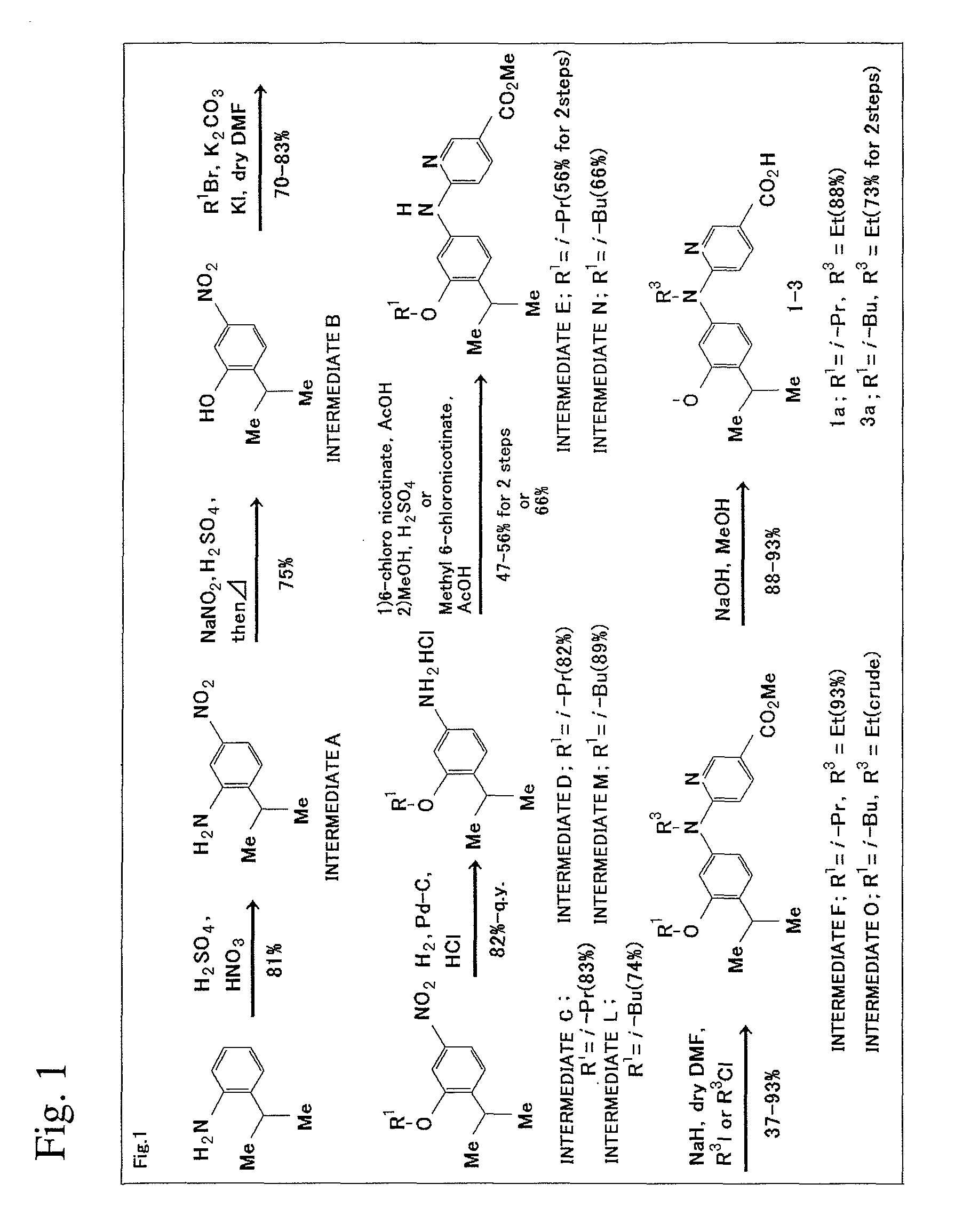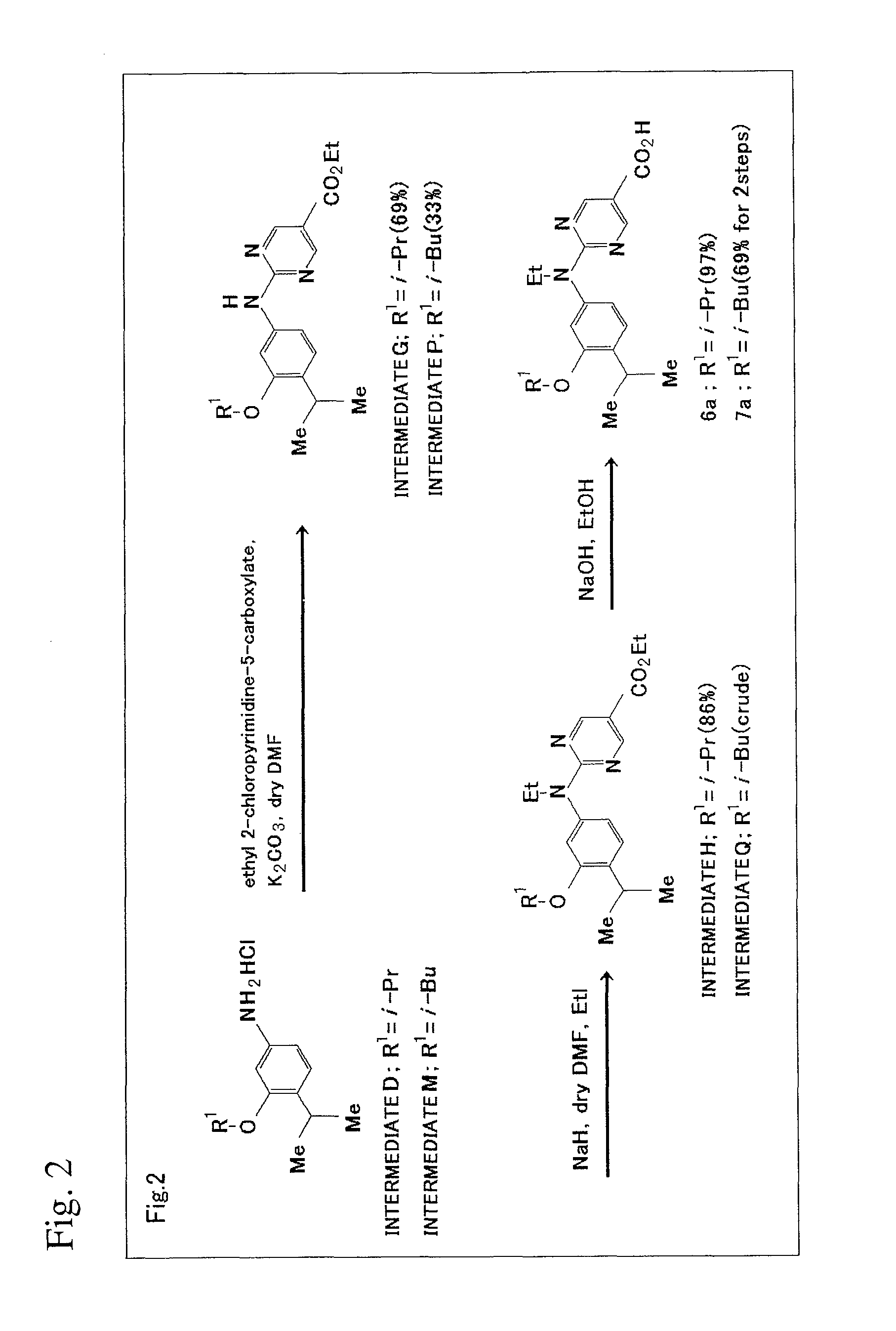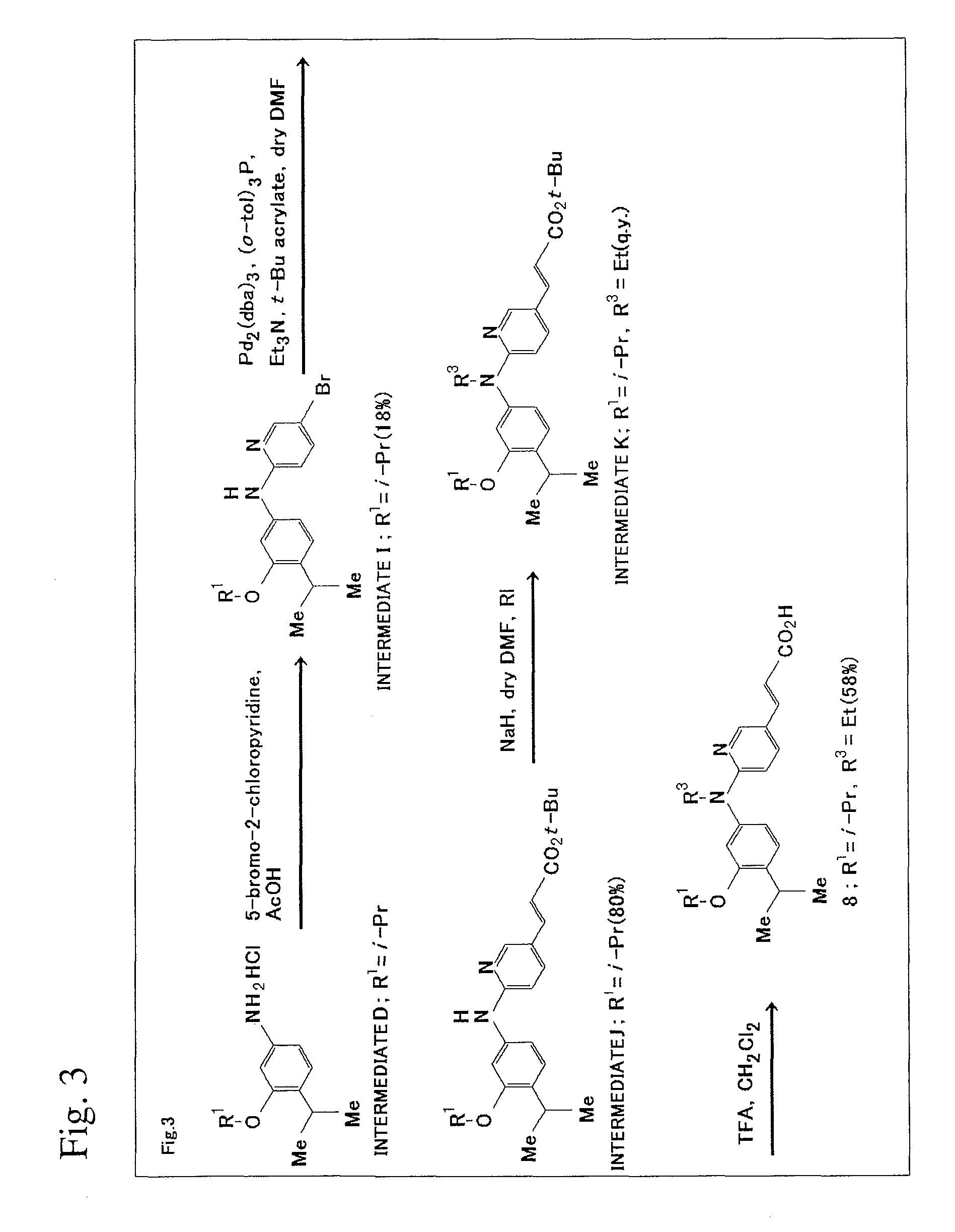Rexinoid compound having alkoxy group
a technology of retinoid compound and alkoxy group, which is applied in the field of retinoid compound having alkoxy group, can solve the problems that the selective ligand of those subtypes has not been synthesized to date, and achieves the effect of significant retinoid synergistic activity
- Summary
- Abstract
- Description
- Claims
- Application Information
AI Technical Summary
Benefits of technology
Problems solved by technology
Method used
Image
Examples
example 1
Synthesis of Target Compound 1a (Net-3IP)
[0146]The scheme of production method in this Example will be shown in FIG. 1.
1) Synthesis of Intermediate A
[0147]2-isopropyl aniline (2.7 g, 20.0 mmol) and concentrated sulfuric acid (5 mL) were mixed under cooling in an ice bath, and then mixed acid (concentrated nitric acid:concentrated sulfuric acid=2:5, 7 mL) was added while not allowing the temperature to increase beyond 0° C. Then, the completion of the reaction was confirmed on TLC (Thin Layer Chromatography) plates (ethyl acetate n-hexane=1:2). After neutralization was performed by using 2 N aqueous sodium hydroxide, the resultant solution was extracted with ethyl acetate (70 mL×3). Organic layer was washed with water (100 mL×2) and saturated saline solution (50 mL). After the obtained organic layer was dried using magnesium sulfate, the solvent was distilled off under reduced pressure to yield dark orange oil of Intermediate A (2.9 g, 81%).
[0148]1H NMR (500 MHz, CDCl3) δ 7.60 (dd, 1...
example 2
Synthesis of Target Compound 6a
[0165]The scheme of production method in this Example will be shown in FIG. 2.
1) Synthesis of Intermediate G
[0166]To the mixture of Intermediate D (148 mg, 0.6 mmol), potassium carbonate (622 mg, 4.5 mmol) and 2-chloropyrimidine-5-carboxylic acid ethyl ester (120 mg, 0.6 mmol), a drop of anhydrous N,N-dimethylformamide was added, and the resultant solution was heated to 110° C. for hours with stirring. After the completion of the reaction was confirmed on plates (ethyl acetate:n-hexane=1:5), ethyl acetate (30 mL) was added to dissolve the reaction mixture. After the ethyl acetate layer was washed with water (20 mL×2) and saturated saline solution (10 mL), the washed layer was then dried using magnesium sulfate. The solvent was distilled off under reduced pressure to yield crude crystal (185 mg). Flash column chromatography (ethyl acetate:n-hexane=1:6) yielded yellow plate-like crystal of Intermediate G (152 mg, 69%).
[0167]1H NMR (500 MHz, CDCl3) δ 8.95...
example 3
Synthesis of Target Compound 8
[0174]The scheme of production method in this Example will be shown in FIG. 3.
1) Synthesis of Intermediate I
[0175]Intermediate D (181 mg, 0.7 mmol) and 5-bromo-2-chloropyridine (135 mg, 0.7 mmol) were dissolved in acetic acid (2.0 mL) and heated to 80° C. for 20 hours with stirring. After the completion of the reaction was confirmed on TLC plates (ethyl acetate:n-hexane=1:4), sodium bicarbonate aqueous solution was added to neutralize the solution, and the resultant solution was extracted with ethyl acetate (30 mL×3). The ethyl acetate layer was washed with water (50 mL×2) and saturated saline solution (50 mL) and was dried using magnesium sulfate. The solvent was distilled off under reduced pressure to yield crude crystal (244 mg). Flash column chromatography (ethyl acetate:n-hexane=1:6) yielded colorless crystal of Intermediate I (45 mg, 18%).
[0176]1H NMR (300 MHz, CDCl3) δ 8.20 (d, 1 H, J=2.5 Hz, Ar—H), 7.52 (dd, 1 H, J=9.0 Hz and 2.5 Hz, Ar—H), 7.14...
PUM
 Login to View More
Login to View More Abstract
Description
Claims
Application Information
 Login to View More
Login to View More - R&D
- Intellectual Property
- Life Sciences
- Materials
- Tech Scout
- Unparalleled Data Quality
- Higher Quality Content
- 60% Fewer Hallucinations
Browse by: Latest US Patents, China's latest patents, Technical Efficacy Thesaurus, Application Domain, Technology Topic, Popular Technical Reports.
© 2025 PatSnap. All rights reserved.Legal|Privacy policy|Modern Slavery Act Transparency Statement|Sitemap|About US| Contact US: help@patsnap.com



